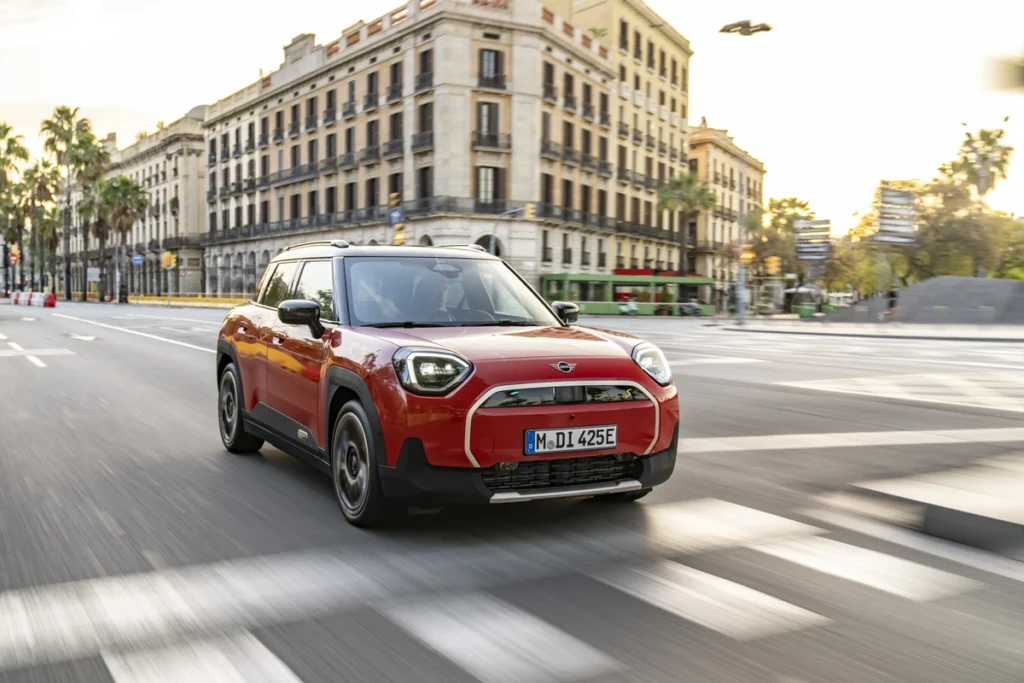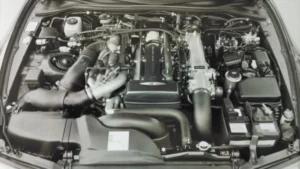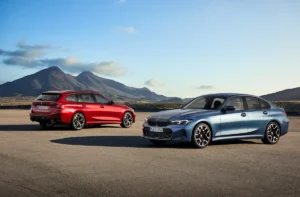Your Complete Guide to Road Tax in the UK 2024: VED Tax Bands Explained

Mini Aceman
Vehicle Excise Duty, aka road tax, car tax, or the road fund license is the tax paid by all UK drivers to legally drive or park their car on the public road. The tax structure was first introduced in the 20th century and naturally, over time, has gone through plenty of changes, making it quite daunting. Here we will guide you through the different VED tax bands, how much road tax costs, how to pay your CED and what you need to do in terms of the tax when you sell your car or take it off the road.
The purchase of a new car, be it old or new, will require you to pay the VED tax. However, there are a few exceptions to this rule too. For instance, if you’re purchasing an electric car or an offering that is completely carbon neutral, you are exempt from paying road tax (although this is set to change in April 2025). Similarly, classic cars over 40 years old and cars used by disabled people or the ones used to transport disabled passengers are exempted as well.
In the past decade, we have seen significant changes to his structure. The amount of car tax you had to pay was based partly on how much your car is polluting the environment. However, as offerings in the market became cleaner and more efficient, the government has made a series of changes to offset the shortcoming in the amount of car revenue collected.
Most recently, the Office of Budget Responsibility forecasted £9.4 billion to be raised by the VED tax by 2027/28. This is up from the £7.3 billion collected in the 2022-23 year, and £5.8 billion in the year before the VED tax changes in 2017. No point in guessing that the revenue collected has remained on an upward trend since the 90s. However, with the uptick of EV sales in the country, we might see an imminent change coming soon.
It should be noted that despite the common belief that road tax is spent on the maintenance and creation of public highways, the money collected in fact goes into central government budgets which could technically be spent anywhere.
Read More: Your Ultimate Guide to Engine Remapping in the UK (2024)
How Much is My Road Tax?
The primary criteria that determines how much you pay for your VED depends on when the car was first registered. Inflationary increases aside, the changes to the road tax systems will not be retroactively applied. This essentially means that despite any changes to the structure during your car’s time on the road, you will still pay according to the same structure that was in effect when your car was first registered.
The cars you buy today will be taxed according to the band systems introduced in the last major overhaul on April 1, 2017 (adjusted for inflation). Similarly, if you are buying a car that was registered before April 1, 2017, you will pay according to the band structure that existed when it was registered, even if the car is still in production.
With that aside, the next thing to know is that the UK’s current road tax system is divided into two main rates. You pay the first tax rate during the car’s first year on the road. Note that this varies on how much carbon dioxide it emits. After your car completes two years on the road, it will be taxed on the second system, which is not affected by your CO2 emissions but by how much the car costs when it is new.
Both systems take into account the powertrain of the car – electricity, conventional fuel or both. Till next April, electric cars and cars with zero emissions will enjoy no tax.
How is VED Tax Calculated in the UK?
The first year of road tax is included in the car’s on-the-road (OTR) price and is based on its emissions ranging from £0 for zero-emission cars to £2,745 for models that emit 255g/km or more.
Note for diesel owners: Previously, almost every diesel car would sit one emissions band higher for the first year rate as the Treasury decided to increase the first-year rate for diesel not complying with “the latest emissions standards” – RDE2 in government lingo. Now, as it has become a legal requirement to meet the RDE2 (from Jan 2021), this is no longer an issue.
Read More: Car Insurance in the UK: How Does it Work?
Road Tax for Cars Registered Between March 1, 2001 and March 31, 2017
The emission-based system was first introduced by the UK government on March 1, 2001. This structure followed tax bands that increased depending on your car’s emissions. The following table shows the rates at which the tax froze for cars that were registered before the overhaul on March 31, 2017.
| VED Band | CO2 Emissions | Annual Rate |
| A | Up to 100 g/km | £0 |
| B | 101-110 g/km | £20 |
| C | 111-120 g/km | £35 |
| D | 121-130 g/km | £160 |
| E | 131-140 g/km | £190 |
| F | 141-150 g/km | £210 |
| G | 151-165 g/km | £255 |
| H | 166-175 g/km | £305 |
| I | 176-185 g/km | £335 |
| J | 186-200 g/km | £385 |
| K | 201-225 g/km | £415 |
| L | 226-255 g/km | £710 |
| M | Over 255 g/km | £735 |
Tax Bands for Cars Registered After April 1, 2017
After the changes in April 2017, VED tax bands are no longer calculated solely on the car’s emissions. While this is true for the first year of ownership, from the second year onwards, owners will pay the standard petrol or diesel rate. To reiterate, electric cars and cars with zero emissions are exempt till April next year.
If your car’s price is £40,000 or over, you will also be liable to pay the Expensive Car Supplement aka the luxury car tax. This is a £410 bill stacked on top of the £190 per year standard rate. This will be levied on the car for only the first five years, of course, subjected to inflationary increases.
| CO2 emissions (g/km) | Standard petrol/diesel rate | First year rate |
| 0 | £0 | £0 |
| 1 to 50 | £190 | £10 |
| 51 to 75 | £190 | £30 |
| 76 to 90 | £190 | £135 |
| 91 to 100 | £190 | £175 |
| 101 to 110 | £190 | £195 |
| 111 to 130 | £190 | £220 |
| 131 to 150 | £190 | £270 |
| 151 to 170 | £190 | £680 |
| 171 to 190 | £190 | £1,095 |
| 191 to 225 | £190 | £1,650 |
| 226 to 255 | £190 | £2,340 |
| Over 255 | £190 | £2,745 |
How to Pay Your Car Tax
While the structure might seem complicated on paper, the process, fortunately, is rather easy. The most convenient way would be to visit the government’s official website and click on ‘tax your vehicle’. It’s a fairly simple step-by-step process using the reference number from a V11 reminder letter that you got from the DVLA. If not, you can also pay it at most post offices with your V5C.
How is Car Tax Monitored
The UK government uses a relatively new system of automatic number plate recognition cameras that works in conjunction with the DVLA databases. In 2014, the UK government abolished the tax disc after 93 years. This made the system cheaper to run and made it difficult for those who tried to avoid paying the taxes. The automatic cameras replaced the visual checks that were possible with the tax discs.
With the new system, DVLA will send you a reminder when your road tax is up for renewal as the deadline approaches. You can then continue to pay your road tax online, over the phone or at a post office.
The government has continued the options of paying ahead of 6 or 12 months with an additional option to pay it monthly. The government will also provide a direct debit option with solely the monthly payment option. The convenience, however, comes at a surcharge of five per cent.
Taking Your Car Off the Road
If you plan on not using your car for 6 months or more, you are eligible to use the Statutory Off Road Notification (SORN) to avoid paying road tax. It should be noted that off the road strictly means off the road. You can’t claim SORN unless you have off-street parking, a garage or some other kind of storage that’s away from the public highway. Parking on the road means that you will still have to pay the road tax along with the MoT.
SORN declarations can be made at any time with your V5C registration document, or pay it when DVLA sends you a reminder where you can use the 16-digit renewal code to declare SORN. On the occasion of you having paid the amount already when declaring SORN, you will be eligible for a refund for that month.
Once the car is back on the road, all you need to do is to tax the vehicle again which will automatically cancel the SORN.
What to do When Selling Your Car?
Under the new system, the new owner will not be burdened with any remaining road tax pending by the previous owner. Instead, the seller will get a refund on any remaining tax on the vehicle while the buyer has to pay to re-tax the car.
The refund will automatically be issued when the DVLA receives notification about the car’s sale, scrappage, export or SORN. It should also be noted that sellers are expected to inform the DVLA of the sale straight away, failing which will cost them £1,000.






